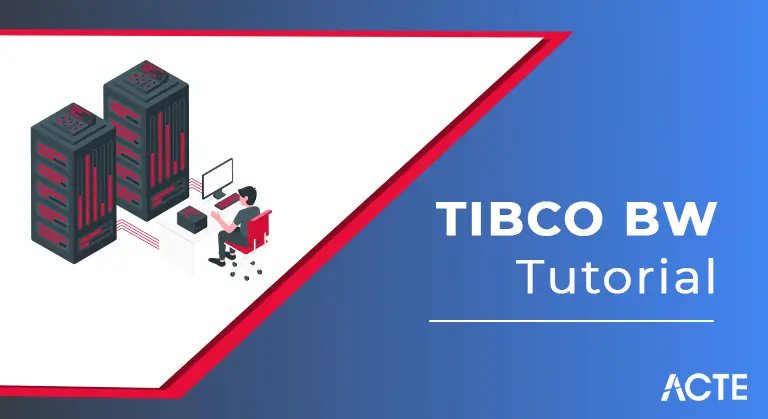
- Introduction to TIBCO BW Tutorial
- Tibco Database Adapter
- TIBCO SSL Certificate: How to Use Self Signed SSL Certificates in TIBCO for HTTP
- TIBCO EMS: How To Send And Receive JMS Messages in Queues
- TIBCO File Adapter Publication Service Step By Step Tutorial
- Example Scenario for TIBCO Exception Handling Tutorial
- TIBCO SOAP JMS Tutorial: How to Develop JMS Based Web Service in TIBCO BW
- TIBCO Domain Utility: How to Create a new Administrator Domain–Step By Step Tutorial
- Develop REST Web Service in TIBCO Step By Step Tutorial
- TIBCO JDBC Call Procedure: How to Call Stored Procedures
- How to Call Java Class Methods in TIBCO By Adding JAR File: Step By Step Tutorial
- Conclusion
- C:\tibco\jre\1.6.0\bin
- To generate a key file with each Public and personal keys; use following command:
- keytool -genkey -keyalg RSA -alias ajmal_certificate -keystore keystore.jks -storepass tibco@ajmal -validity 360 -keysize 2048
- alias is employed to relinquish a reputation to your key. It ought to be distinctive for its purpose. Here it’s ajmal_certificate.
- keyalg is encoding rule sort. Here it’s RSA. storepass is that the secret related to the repository. Here it’s tibco@ajmal
- keystore.jks is name of the file that acts as repository keys.
- validity nominal as 360 suggests that this certificate can stay valid for 360 days.
- When you run this command, you’re asked some queries like your organization name, your full name etc. simply provide some values for these and a file keystore.jks are created which can have each Public and personal keys in it.
- Step 2: Export Public Key from JKS File and Publish it
- Once you have got created JKS file with a Public-Private key try in it, your second step is to extract the general public key from the JKS file so publish it to the globe.
- To export public key from JKS file, run the subsequent command:
- keytool -export -alias ajmal_certificate -storepass tibco@ajmal -file ajmal_server.cer -keystore keystore.jks
- Now we’ve got our Public key in certificate file (ajmal_server.cer). we will provide this certificate file to any shopper UN agency desires to speak with our server wherever we’ll have the key put in.
- Using TIBCO Designer produce a brand new project (I named it SSLServer). within the project, produce a brand new Identity (available normally Palette).
- For Identity configuration, opt for Identity go in the sort and browse for the JKS go in the address. check that that you just add three slashes within the file name otherwise you’ll get miscalculation.
- In the File sort opt for JKS and provides the secret. secret ought to be same that you just used whereas making the JKS file.
- Sure SSL for it. In HTTP association configuration, check Use SSL possibility. Then click on set up SSL button and opt for the identity.
- Double Click on the File Adapter configuration that you just additional in Step one. attend Adapter Services folder and add a brand new publication service from the File Adapter Palette.
- In the configuration tab of Publication service, we tend to square measure selecting Rendezvous as transport. As we would like Adapter service to urge triggered for each new record within the file, we decide Record Transfer within the Transfer mode. within the Life Cycle, opt for repetition as we tend to don’t need the Adapter to urge triggered just the once.
- I have chosen Polling Interval to thirty seconds during this example situation. opt for Input Directory by using browse possibility. This input directory can contain the file that we tend to square measure configuring publication service.
- As we would like to use File Adapter service for a particular file solely, in Recognition technique opt for By File Name.
- File Name field can contain the name of the file that we would like to use as input for Adapter service.
- In this step, we’ll produce a TIBCO Designer method that may be able to receive the info from the file Adapter publication service and can create the info accessible to the method. In real situations, knowledge has to be employed in a way within the method once receiving it through Adapter Subscriber however during this example case, we’ll simply receive the info and finish the method.
- Create a brand new method and add Adapter Subscriber Activity. As this activity could be a method starter, it’ll replace the default begin activity from the method.
- In the Configuration tab of the Adapter Subscriber, opt for the File Adapter Publication Service that we tend to created in previous step In the Transport tab, we want to confirm that every one our transport configurations together with the topic square measure matching with the Transport configuration of our Adapter Publication Service (which was designed in Step 2).
- For testing the Adapter based mostly applications like this, we want to run 2 testers. 1st we want to run Adapter Tester so designer tester.
- Go to tools and click on on Show Adapter Tester. a brand new window can open during which you’ve got to pick the file Adapter and also specify a operating directory.
- HTTP Receiver to act as method starter to induce user request on the required association (I have created communications protocol reference to host as localhost and port as 6700 for this example).
- Read File activity to scan xml information from a file.
- JDBC Update activity to store the file content in a very information table.
- Catch activity to catch exceptions within the code.
- Send communications protocol Response activity to come back back response to the requesting supply (browser in our case).
- When operation gets fortunate
- When an exception is thrown and is caught properly
- When exception is thrown however not handled expressly
- Success condition that we tend to use to see if operation is fortunate are going to be the worth of $Error/ErrorReport/MsgCode variable. If this variable is null it means that there was no error within the method.
Introduction to TIBCO BW Tutorial:
Web Service Development in TIBCO is one among of} the fundamental factor that just about every TIBCO developer needs to do. desegregation applications through net Service Interfaces may be a common observe in virtually each organization so as to accommodates SOA standards. Developing SOAP net Service in TIBCO isn’t a troublesome job. TIBCO Designer tools build it simple to reveal or consume net services during a convenient method while not going into the trouble of writing advanced code. This tutorial can guide you step by step the way to develop a SOAP net service in TIBCO designer. net service that {we can|we’ll|we are going to} be developing during this tutorial will expose one perform employeeDetails. This perform are going to be exposed AN exceedingly|in a very} WSDL and users are going to be able to get all details concerning an worker supported worker code.
Step 1: Produce New Project
Create a brand new project in TIBCO designer. Name it no matter you wish. I named it as SOAPTest within the example
Create project
Step 2: Produce Folders for correct Organization
In order to arrange elements higher, produce separate folders for Processes, Connections, Schemas, Services etc as shown below:
Create folders
Step 3: Create JBDC and hypertext transfer protocol Connections
Our net service operation are going to be taking all details concerning worker from Oracle info. therefore we’d like to make a JDBC association in our Connections folder. Specify, host, IP, SID, User, Password, driver etc for the association. Once you’re certain all needed data is inhabited, use check association button to check the JDBC association.
Create jdbc association
We additionally ought to produce a hypertext transfer protocol association within the same directory which can be utilized in termination URL of our net service.
create hypertext transfer protocol association
Step 4: produce XML Schema for Input and Output.
Our net service can receive worker Code as input and can come worker details as output. we’d like to make 2 schemas (XSD files) for this:
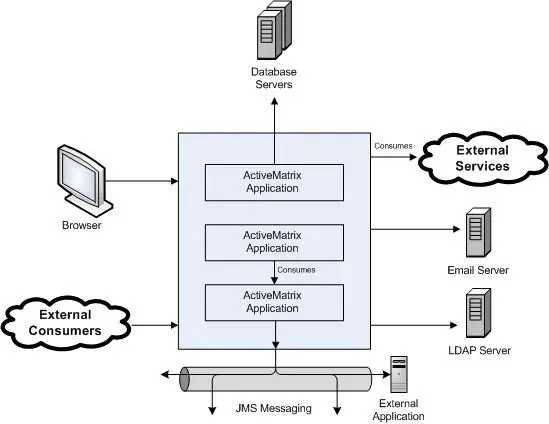
Tibco Database Adapter:
Tibco information Adapter is employed for sanctionative communication between TIBCO processes and information system. There area unit 2 sorts of services which will be used with a information Adapter:
Publication Service
Adapter Publication service extracts knowledge from the modified rows of a information table and publishes them on acceptable subject names that area unit then signed by Adapter subscriber method starter.
Subscription Service
Subscription service of a information Adapter will opposite to a publication service. once running as a subscriber, information Adapter listens on a theme, receives messages and updates the relevant tables in its associated information.
Adapter service configuration
In the Table Tab of publication service configuration, opt for the table TBL_EMPLOYEE by clicking on Add Table button. it’ll look as below once adding the table:
Adapter service add table:
In the publisher choices tab, we’ve got chosen Publish By price as Storage Mode and Update as Update Mode. Note that we tend to don’t produce publication table. Its created mechanically.
Adapter publisher choices setting:
We don’t ought to build any modification in Advanced tab and it ought to appear as if this:
Adapter service advanced setting
Now we tend to area unit finished configuring our Adapter and creating it prepared. Now is the time to maneuver forward for crating a method for our Adapter service.
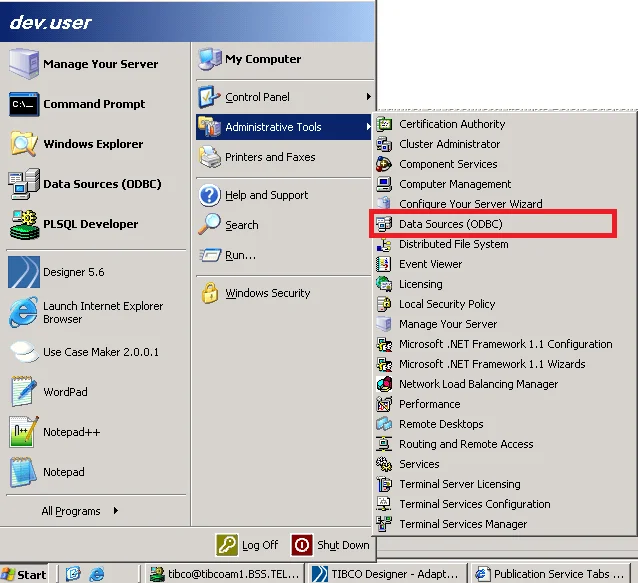
TIBCO SSL Certificate: How to Use Self Signed SSL Certificates in TIBCO for HTTP:
SSL (Secure Sockets Layer) could be a commonplace security technology used for establishing associate encrypted link between an internet server and a shopper. SSL encoding technology works on 2 key principle–a Public key familiar to each one and a non-public key that is understood solely to the meant recipient. SSL primarily based secure communication is enabled by the utilization of SSL Certificates.
In TIBCO, security is of a major concern once integration totally different applications and services. Communication between totally different applications over the network during a safe and secure manner is enabled by the utilization of certification mechanism of SSL. the opposite choices accessible to implement security in TIBCO Services is by exploitation LDAP primarily based authentication or straightforward username, secret primarily based authentication.
In this TIBCO SSL Certificate Step by Step tutorial, i will be able to justify however we will use a Self Signed Certificate for SSL communication in TIBCO. but in real time situations, you won’t be exploitation self signed certificates; rather you’ll opt for a CA (Certificate Authority) signed certificate.
Produce a Certificate in TIBCO exploitation JAVA Keytool:
Keytool could be a utility provided by JAVA SDK to form your own SSL certificates. Keytool may be found within your JAVA installation in your machine. In my case; I even have keytool utility accessible at the subsequent path:
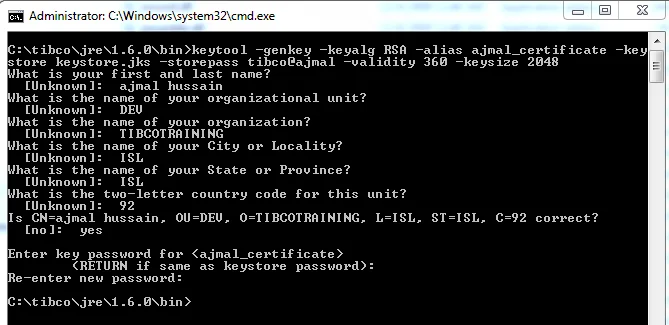
TIBCO EMS: How To Send And Receive JMS Messages in Queues:
In this TIBCO EMS beginners step by step tutorial, your can learn the way to send and receive JMS queue messages in TIBCO. TIBCO EMS (Enterprise electronic communication|electronic communication} Service) could be a normal messaging platform that simplifies and accelerates the mixing and management of information distribution in superior, enterprise environments – facultative time period decision-making and event-driven execution of business operations. TIBCO EMS is truly a customization of Java electronic messaging Service (JMS) by TIBCO. TIBCO EMS is one in style approach used for application integrations at enterprise level thanks to its responsibility and potency. In case of EMS based mostly electronic messaging in TIBCO, a centralized EMS server is employed wherever queues and topics square measure maintained for storing and delivering EMS Messages. however TIBCO EMS electronic messaging works? you’ll learn this by probing following simple and straightforward steps:
Step 1: begin EMS Server
First step in TIBCO EMS tutorial is to begin EMS Server. attend begin and open Run utility. sort services.msc in it and press enter.
Step 2: produce JMS affiliation in TIBCO
For act with EMS Server, we want to form a JMS affiliation 1st. produce a brand new JMS affiliation by probing Add Resources–>JMS–JMS affiliation. check that that JNDI Context URL has protocol prefix before host and port details.
Step 3: produce JMS Message Sender and JMS Message Receiver Processes
We need to form one method for causation JMS message to a queue at EMS Server and another method which is able to be receiving this message from the queue.
Step 4: take a look at TIBCO EMS Queue Message causation and Receiving processes
Create a brand new method instance of method SendJMSMessage by clicking on produce employment icon on tester. you’ll see that SendJMSMessage method runs and also ReceiveJMSMessage method gets dead.
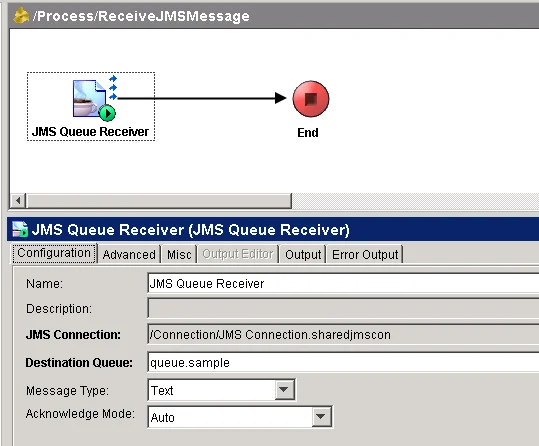
TIBCO File Adapter Publication Service Step By Step Tutorial:
TIBCO File Adapter is employed to alter flow of knowledge between files and TIBCO Enterprise Service Bus. File Adapters offer publication and subscription services that square measure wont to get the info from the file or to jot down the info to the file severally. In this step by step tutorial on File Adapters, you’ll learn the way you’ll be able to use TIBCO File Adapter publication service to receive knowledge from the computer file and use it within the TIBCO designer method.
Step 1: Add File Adapter Configuration within the project
First we want to feature File Adapter configuration within the project. attend File Adapter Palette and drop the File Adapter Configuration in your project
Step 2: Add Publication Service in File Adapter and tack it
Step 3: produce a TIBCO method with Adapter Subscriber to Receive knowledge from File Adapter Publication Service
Step 4: take a look at File Adapter Publication Service
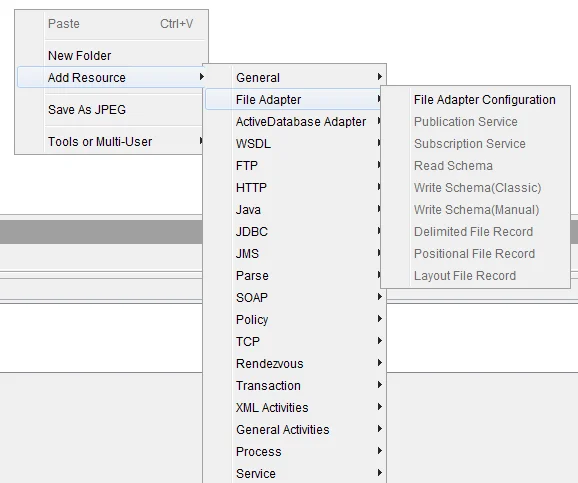
Example Scenario for TIBCO Exception Handling Tutorial:
Following my principle of “Simple is better”, I actually have chosen a straightforward situation for this tutorial. Let’s suppose we wish to own AN application that takes AN worker name through communications protocol request and for that name, it’s for AN xml come in native classification system and stores the xml information into a information table.
We want to handle doable exceptions within the aforesaid situation in order that user gets correct response over communications protocol once causation request to TIBCO method. Below are the steps for TIBCO Exception Handling Tutorial:
Step 1: Produce a method with communications protocol Receiver as method Starter
The process that I actually have created for this tutorial takes on communications protocol Parameter “name” as input via POST methodology as shown within the screenshot below. This method can have following activities:
Step 2: Tack together scan File Activity
In this example, we’ve to scan files from the folder E:\ajmal\TestData. no matter user sends in name only parameter in communications protocol request, are going to be wont to get file from the file directory. E.g. in my native file directory, I actually have created XML file with the name abbasi.xml.
Step 3: Tack together JDBC Update Activity
After reading content from XML file, it’ll be keep into a information table in our example. For this we’d like to tack together JDBC Update activity
Step 4: Tack together Catch Activity to Catch FileNotFound Exception
Just to convey you a concept the way to handle a selected form of exception, I actually have used Catch activity within cluster which is able to handle “FileNotFound” exception. This exception can arise once user sends a reputation in communications protocol request that file doesn’t exist within the given path (E:\ajmal\TestData\)
Step 5: Tack together Send communications protocol Response activity
In the example, there ar 3 situations that we’d like to send response back for communications protocol request:
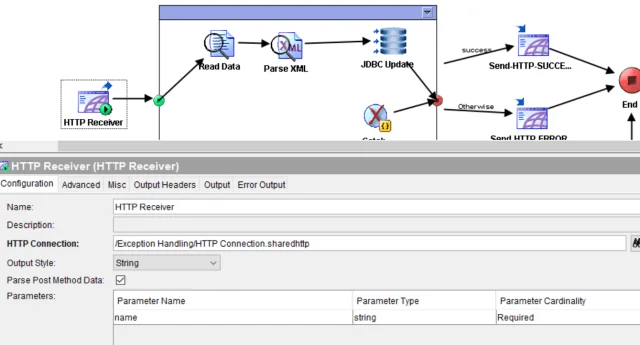
TIBCO SOAP JMS Tutorial: How to Develop JMS Based Web Service in TIBCO BW:
In case of JMS based mostly SOAP net services, JMS queues ar used that store messages sent over JMS transport. JMS queues ar maintained on a JMS Server. For SOAP JMS net services in TIBCO, its necessary to own TIBCO setup at each consumer and server facet. On the opposite hand, for communications protocol based mostly SOAP net services, there’s no such demand in consumer facet.In this TIBCO SOAP JMS tutorial, we’ll produce an online service in TIBCO which will receive age as Input and it’ll come back eligibility standing as response. we tend to ar keeping the net service logic as easy as doable here as purpose is to explore all the steps concerned in developing JMS based mostly SOAP service and not method implementation details.
Step 1: produce JMS association
For a JMS based mostly SOAP net service, the primary factor that we’d like to try and do is to make a JMS association to a JMS queue. produce a JMS association in your project by aiming to Add Resources–>JMS–>JMS association.
Step 2: produce Schemas for JSM SOAP net Service input and output
Our net service can receive just one input which is able to be age of someone. to make XSD for this, select XML Schema from XML Palette.
Step 3: produce WSDL in TIBCO Designer for SOAP JMS Service
We are aiming to follow the “contract 1st” approach for making net service during which we’ll produce a WSDL first and so move towards service implementation.
Step 4: produce net Service from WSDL in TIBCO
In order to make net service from the WSDL, right click on the WSDL within the Project window and attend Tools or multi-User–>Generate net Service–>From WSDL
Step 5: Implement TIBCO warfare method for net Service
Our method created by TIBCO Designer are going to be easy during this case. it’ll have solely a plotter activity wherever we’ll set the message to be sent as output.
Step 6: check TIBCO JMS SOAP net Service exploitation Designer Tester
Our last step during this TIBCO net Services tutorial is to check the service that we’ve created. For this, we’d like to make a SOAP consumer method in TIBCO Designer 1st.

TIBCO Domain Utility: How to Create a new Administrator Domain–Step By Step Tutorial:
TIBCO Domain Utility is employed to make new administrator domains or manage existing domains. during this tutorial, i’ll teach you step by step, a way to produce a replacement administration domain in TIBCO mistreatment Domain Utility.
Step 1: choose a class and Task in Domain Utility:
Go to start–>TIBCO–>Domain Utility and so open it. within the domain utility, choose Domain Configuration within the class and build a replacement Administration Domain within the task list
Step 2: provide name and different associated details:
Write a reputation for domain that you just wish. additionally specify Project directory, Machine name, Hawk cluster and secret writing. In my case, I even have simply given the name and unbroken all others as default
Step 3: Specify communications protocol Port, closing Port and closing String:
In this step you’ll be asked to relinquish a port variety for communications protocol, closing and a closing string. you’ll be able to use any obtainable ports for this. My settings for these fields
Step 4: give body Credentials:
In this step, select a username and word that you just want to use for your new domain
Step 5: give info configuration Information:
In this step you give all necessary data which can be wont to connect with the info. In my case I even have Oracle Xe info put in with SID as Xe running on port 1521 in my localhost.
Step 6: check info connection:
After giving all needed inputs in step five, press check affiliation Button to verify that property to the info is obtaining self-made. As you’ll be able to see in below screenshot, affiliation has with success established with the info
Step 7: guarantee all is nice to travel before domain creation:
Now you’ll see a window with all the small print that you just provided in previous steps. Verify that everything is okay and if smart to travel, simply click next button
Step 8: self-made Creation of domain notification:
Now you’ll get a replacement window stating that domain has been designed with success in TIBCO administrator. you’ll be asked to start out administrator and HAWK agent nongovernmental organization services for the new created domain
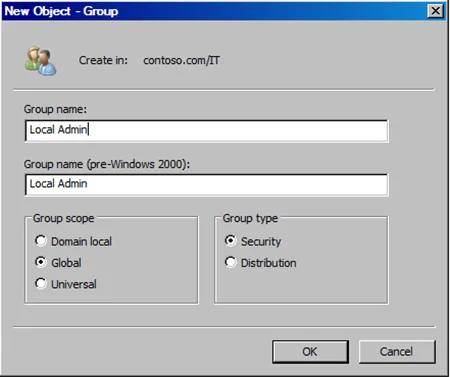
Develop REST Web Service in TIBCO Step By Step Tutorial:
TIBCO biological warfare reposeful net Service Implementation Scenario:For this tutorial example, i’m attending to take an easy state of affairs to clarify you the steps for making reposeful service in TIBCO biological warfare. This service are going to be wont to question Account Details from a info table supported Account ID. For simplicity, the consumer method are going to be causing simply a tough coded AccountID that, our service can fetch the account details from the info and can remit as a service response in XML format.. If you favor to follow my video tutorial instead, on TutorialsPedia YouTube Channel, you’ll be able to watch below video wherever I even have enforced a unique state of affairs of User Management reposeful net service with POST and acquire verbs.
Step 1: produce affiliation Shared Resources
Our reposeful TIBCO net Service can use communications protocol affiliation as a transport. therefore we want to make a communications protocol affiliation in our biological warfare Project. Also, we want to make a JDBC affiliation as we’ll be connecting to ORACLE info to fetch Account details from a table.
Step 2: produce XML Schema to be used as reposeful Service Input and output
Our second step during this tutorial is to make a XML Schema (XSD file) which will be used for Request and Response in our TIBCO reposeful Service Implementation. For our account question example state of affairs, Schema can contain solely AccountID within the request whereas response can contain AccountBeneficiary and AccountBalance.
Step 3: produce Business Logic Implementation method
In this step, we tend to area unit attending to produce a method which can have our service business logic enforced. Our business logic during this example case is extremely easy. we tend to area unit simply attending to use the schema that we tend to created in on top of step as Input and Output in our method and can use JDBC question Activity to question account details from the info so account details area unit sent as output from the method.
Step 4: produce reposeful Service mistreatment REST Dispatch and Reply activity
In this step, we’ll produce a service by mistreatment REST Dispatch and Reply activity from the remainder & JSON Palette. mistreatment REST Dispatch and Reply activity, we will expose a biological warfare method as a reposeful service. The biological warfare method that we tend to created in Step three are going to be utilized in this case as reposeful service implementation method.
Step 5: Use Invoke REST API activity to consume reposeful TIBCO net Service
To consume reposeful Service, I even have crated a replacement method and dragged Invoke REST API activity from REST & JSON Palette in it. within the configuration tab of Invoke REST API activity, specify the Resource URI. This URI ought to purpose to the resource that was adscititious to our service in previous step (bas and Resource URL).
Step 6: check TIBCO reposeful net Service mistreatment TIBCO Designer
Validate the project to form certain that there aren’t any errors. Once valid with success, load service in addition as consumer method within the designer tester. currently produce a replacement job within the designer tester for the consumer method (AccountInformationRequest process).
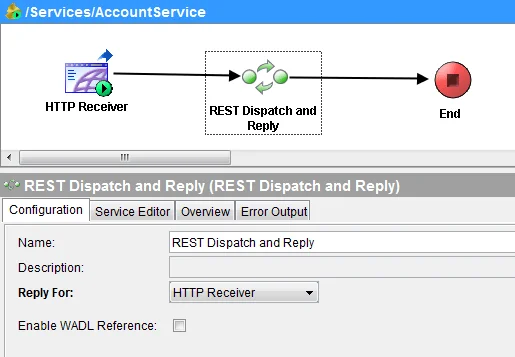
- import java.io.Serializable;
- public category Student implements Serializable
- public static void main(String[] args)
- }
- To compile Student.java file to form a .class file, write the subsequent command within the command prompt.
- javac Student.java
- This will produce Student.Class get in a similar directory wherever you have got Student.java file.
- Now so as to form the JAR file, write the subsequent command within the command prompt:
- jar cvf Student.jar Student.Class
- This will produce a jar file named Student.jar within the same directory.
- Please note that if you produce a JAR file with a better Java Version and your TIBCO installation includes a lower JAVA version, category and its ways of the JAR file won’t seem in your TIBCO project. ensure that your jar is formed using same JAVA version or a lower version.
- Note: If you’re using Netbeans IDE, the JAR file that gets created mechanically after you build the project are within the dist folder of the project.
- Once we’ve got created a JAR File, we want to feature it to our TIBCO project. within the TIBCO designer project, add a brand new AliasLibrary from the final Palette.
- In the Aliases Tab of this activity, browse and add Student.
- Create a TIBCO Designer method and add Java methodology activity from the Java Palette. within the configuration of this activity, select the AliasLibrary. Then use the category browser choice before of sophistication field in order that all the JARs area unit shown. As you’ll see within the screenshot below; Student.jar is additionally on the market and that we will select Its category methods:
- Tibco choose methodology from a category in jar. After choosing the category and Its methodology, complete configuration of Java methodology
- As getAge() methodology of our java category needs no input parameter, we tend to don’t got to attend the Input tab of Java methodology activity during this case.
- Simply validate the method and once Its valid with success, proceed to next step within which we are going to take a look at however we are able to decision and run java category methodology of a jar file from our TIBCO method.
TIBCO JDBC Call Procedure: How to Call Stored Procedures:
TIBCO JDBC decision Procedure activity from JDBC Palette in TIBCO biologic attack is employed to decision a hold on Procedure in a very information to perform any form of actions. during this tutorial, i will be able to make a case for a way to use JDBC decision Procedure activity to decision a information procedure then use the result information within the method.
Step 1: produce a information association
First thing that we want to try to to for any project involving information activities is creation of a information association. attend JDBC Palette and select information association. Then specify the association configurations. In my case, i’m connecting to Oracle information
Step 2: produce designer method to decision a hold on procedure
Before making a designer method which may use JDBC decision Procedure activity to execute a hold on procedure, we tend to initial got to produce a information procedure. I actually have already created an easy PROCEDURE in my information
Step 3: take a look at JDBC decision Procedure TIBCO method
Now our method is totally designed. Validate the method to make sure that there’s no error. Once valid with success, load the method in designer tester. Now that we’ve got a PROCEDURE created and information created on the market within the several information table, we are able to move forward for creation of a method.Create a brand new method in designer and add a JDBC decision Procedure Activity within the method. within the configuration tab of JDBC decision Procedure activity, specify JDBC association, select acceptable Schema and therefore the procedure name (choose the procedure that we tend to created above).
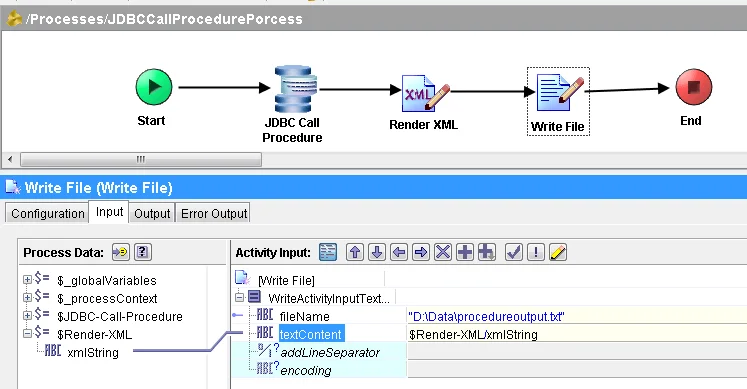
How to Call Java Class Methods in TIBCO By Adding JAR File: Step By Step Tutorial:
In this Step by Step Tutorial, i’m attending to make a case for however we are able to add our custom JAVA Code’s as a JAR get in our TIBCO project then a way to decision Java category ways using Java methodology activity on the market in Java Palette.
Step 1: Write Java category and build Its JAR file
The first factor that we want to try to to is to jot down a Java category which can be then value-added to a JAR File. A JAVA category that we would like to use within the kind of a JAR in our TIBCO project should implement Serializable interface.
Now you’ll compile the category and build Its JAR file using the below commands. (I used Netbeans IDE that mechanically created the JAR file once I designed the project).
Step 2: Add JAR to the TIBCO biologic attack Project
Step 3:Decision Java methodology from a jar file using TIBCO Java methodology activity
Step 4: Run Java category methodology from a JAR file using TIBCO Java methodology Activity
Load the method in designer tester and run it. As you’ll see within the screenshot below, code has run with success andour java methodology has came the result supportedmthe implementation within the java category
- Tibco biological attack is Enterprise Application Integration mechanism for watching and deploying ways and maintaining servers and utilization that facilitate related to protocols, together with HTTP/S, JDBC, SMTP, at an equivalent time XML Java, and net Services. strong protest approach and failure square measure inward throughout the configuration, trial, and preparation. It presents fault-tolerance via allowing distribution of jobs and packaged Adapter code for combining appeals into the bottom. we tend to printed TIBCO Business Work to boost your business be as manageable and as productive as attainable. With us, you notice the solid support you wish to maneuver at the speed of tomorrow.
- In Tibco biological attack coaching, members gain important skills needed to work out integration challenges applying for TIBCO Active Matrix Business Works (BW) program. The members also will study however Active Matrix Business Works permits businesses to instantly and with efficiency integrate deeply distributed on-premises and knowledge sources and cloud applications, commercialism partners, mobile apps, IoT devices, and social networks. Once this coaching is over, the participants would be able to deploy, create, and monitor completely different solutions in TIBCO.






